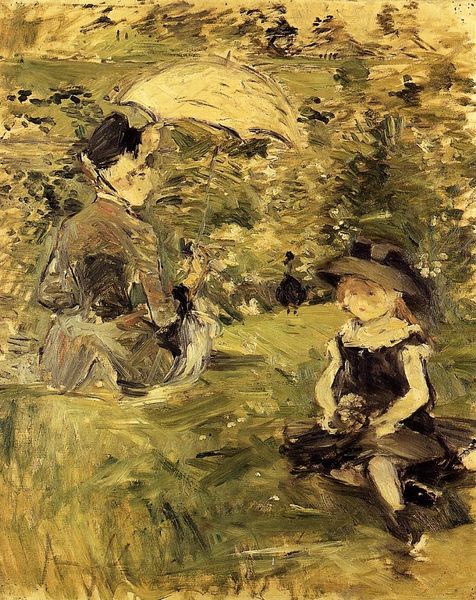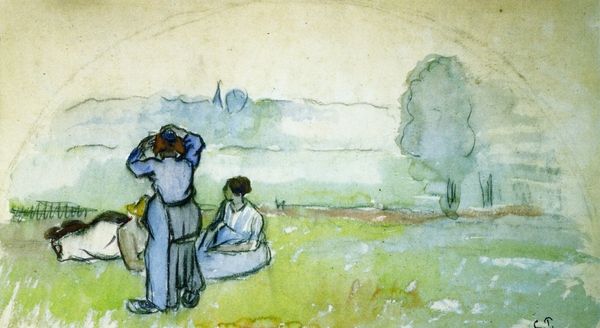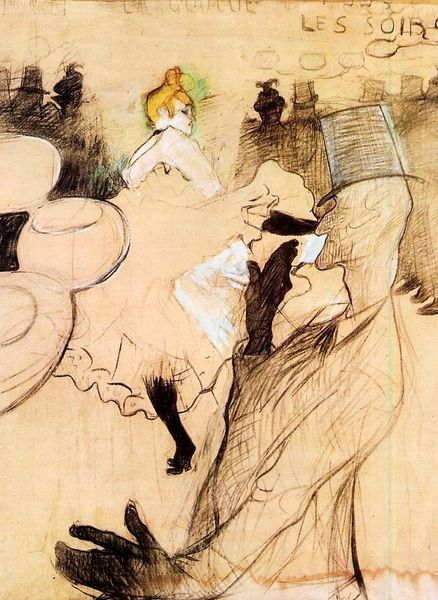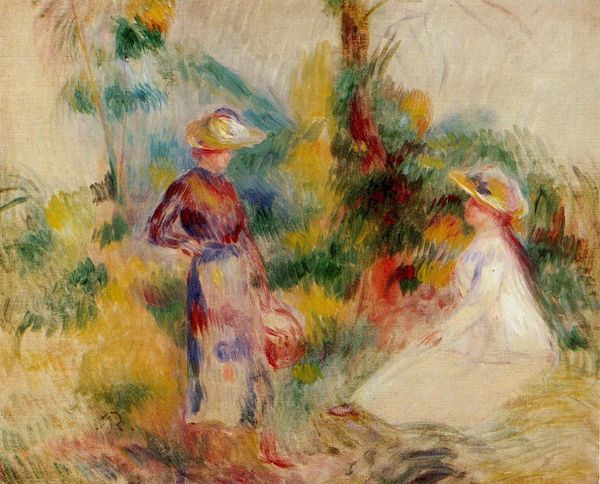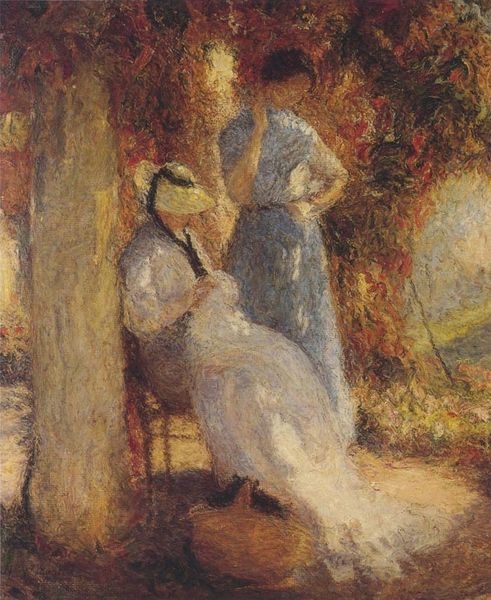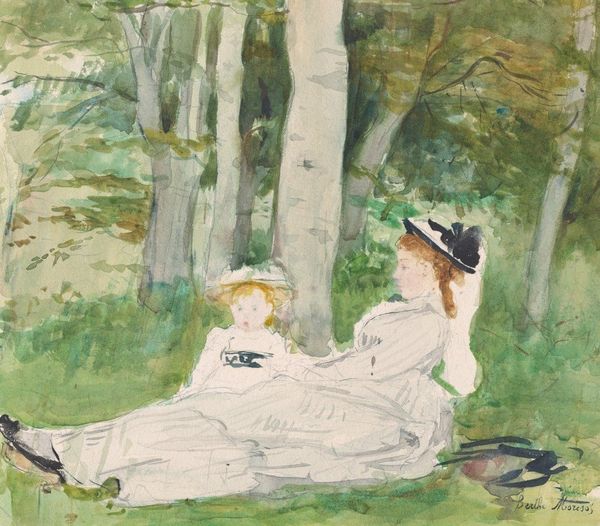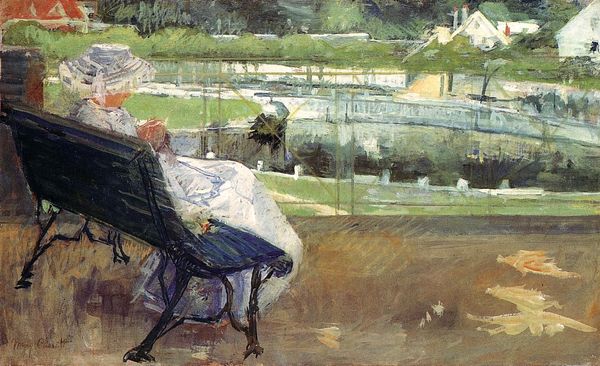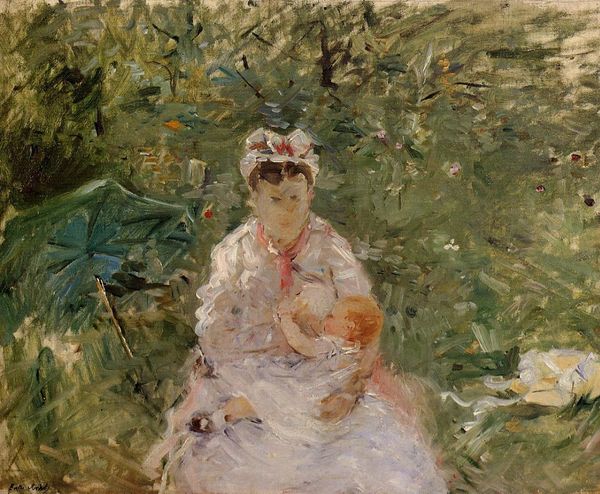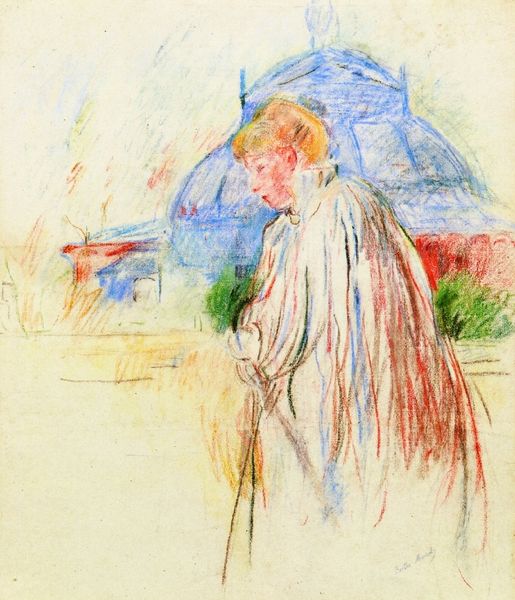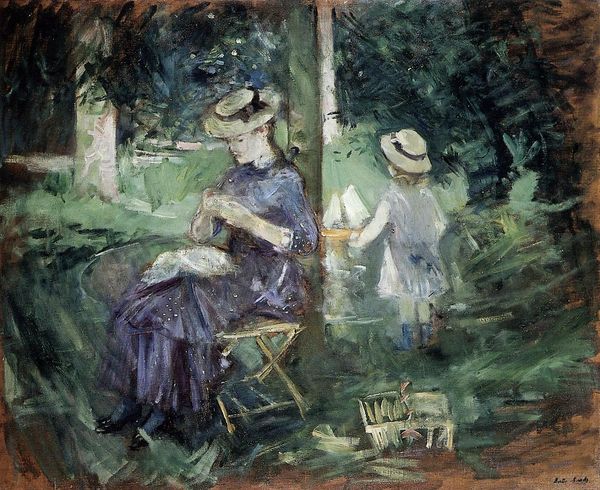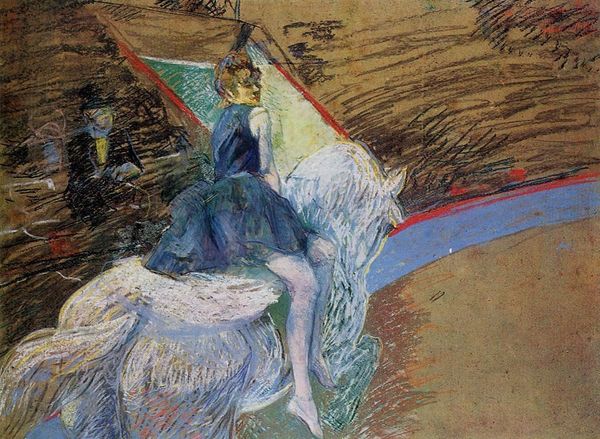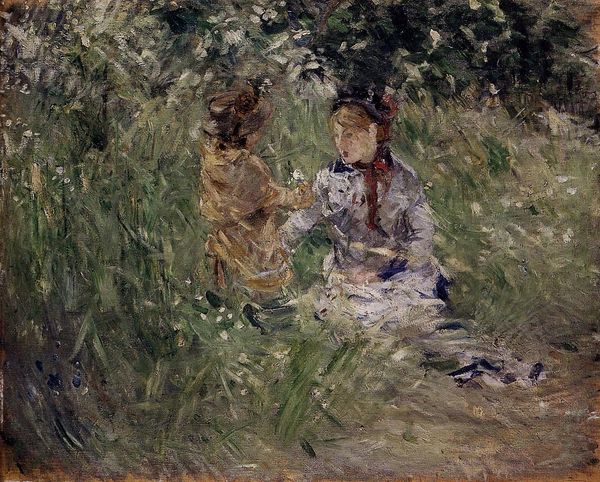
Copyright: Public domain
Berthe Morisot painted "Woman and Child Seated in a Meadow" using watercolor, which is a medium known for its fluidity and transparency. The quick, light strokes capture a fleeting moment, typical of the Impressionist movement. Watercolors demand spontaneity. Unlike oil paints, they don't allow for extensive layering or correction. This immediacy is crucial to understanding the work. Morisot likely painted this en plein air, or outdoors, directly observing her subjects and the landscape. The thin washes of color create a sense of light and air, conveying the atmosphere of a summer day. The use of watercolor also aligns with Morisot’s position as a woman artist in the 19th century. While oil painting was often seen as the domain of male artists, watercolor was considered more appropriate for women, a reflection of social expectations. But Morisot mastered the medium, using its delicate qualities to explore themes of domesticity, leisure, and the everyday lives of women. By understanding the materials and the social context in which she was working, we can appreciate the nuances of Morisot’s artistic choices and her contributions to Impressionism.
Comments
No comments
Be the first to comment and join the conversation on the ultimate creative platform.
